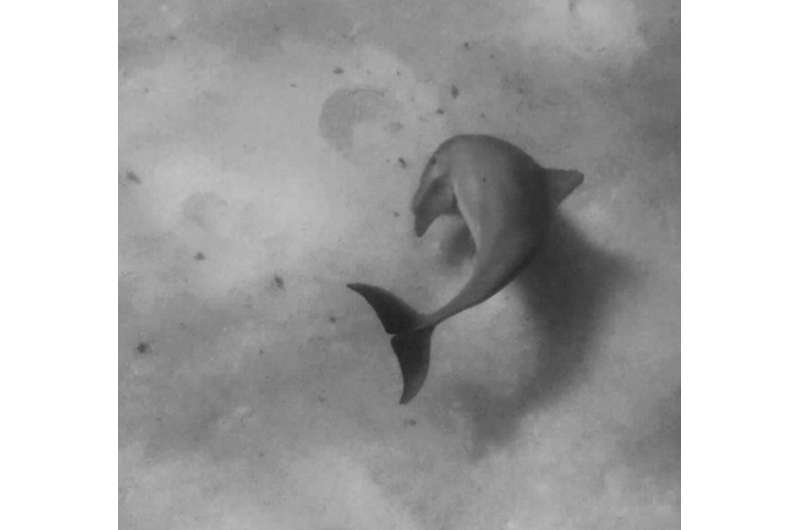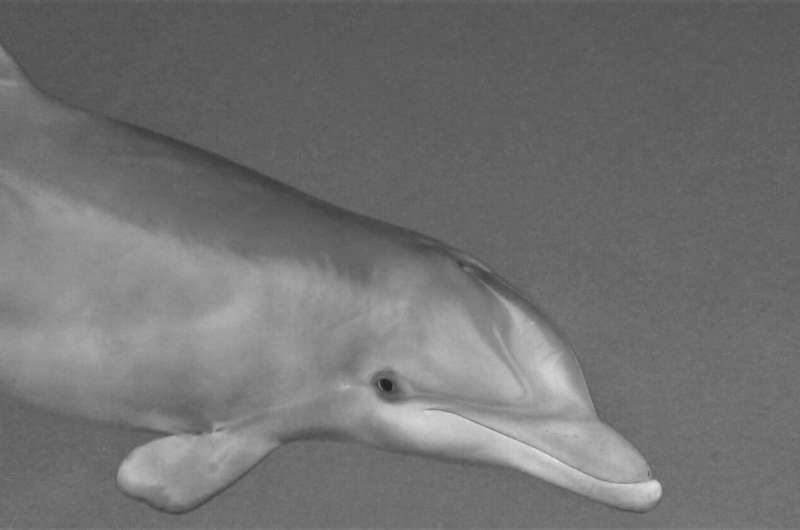November 27, 2019 report
Bottlenose dolphins found to have right-side bias

A team of researchers with the Dolphin Communication Project, St. Mary's College of Maryland and Hunter College, has found evidence that indicates bottlenose dolphins have a right-side bias. In their paper published in the journal Royal Society Open Science, the group describes their study of bottlenose dolphins living off the coast of Bimini, The Bahamas, and what they learned about them.
Humans have a right-side bias—approximately 90 percent of all people are right-handed. Other animals have been found to favor one side or the other, as well. In this new effort, the researchers found this extends to bottlenose dolphins.
The researchers were studying the cetaceans as they engaged in crater feeding off the coast of Bimini, where the dolphins emit sound signals and then listen to the echo. Using it, they can echolocate prey hiding beneath the sand on the bottom of the ocean. The researchers noted that the dolphin's technique involved making a sharp turn just prior to shoving their beaks into the sand. Intrigued, they carried out a study that involved noting which way the dolphins turned before driving their beaks into the sand. Over the years 2012 to 2018, they studied 27 dolphins as they hunted (making 709 turns in all) and found that all of them but one turned their head to the left just before diving in—every single time. The lone exception was a single individual that always turned the other way.
The researchers suggest their findings indicate that bottlenose dolphins have a right-side bias—when they turn to the left, that leaves the right side of their body facing the ocean floor, ready to dive in and capture something to eat. Though they note it is still not clear why the dolphins would have such a preference, they do have a few theories. The first is that they use the left side of their brain to interpret sonic data that arrives predominantly from the right eye. Another possibility is that it has something to do with the way they swallow—their food channel splits to pass around the larynx, which just happens to be wider on the right side of its body. They also note that the echolocation clicks used by the dolphins are produced by the phonic lip, which is on the right side of their head.

More information: J. Daisy Kaplan et al. Behavioural laterality in foraging bottlenose dolphins ( Tursiops truncatus ), Royal Society Open Science (2019). DOI: 10.1098/rsos.190929
Journal information: Royal Society Open Science
© 2019 Science X Network





















